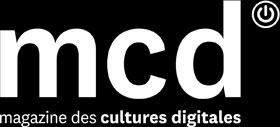about Fréquences – project for iPhone
As soon as I acquired a smartphone, I searched for everything it offered under the term “book”. The applications which resulted from this search were just as numerous as they were disappointing.

Photo: © André Baldinger
Their content: reprises of the great classics (Arthur Conan Doyle, Edgar Allan Poe) or bestsellers (Dan Brown, Mary Higgins Clark). Their form: an outdated animation esthetic, with sepia-toned pages akin to those of a spellbook, accompanied by a page-turning sound effect. Or, in a poorer version, barely formatted raw text, universally accessible and often free, but visually similar to an rtf. What I discovered was frankly an insult to the history (both graphic and editorial) of the book, without anything gained. I dreamed of something more—of a book truly designed for smartphones, which would exploit all its possibilities (visual, audio) and fully assume its format. A portable experimental book that would also be a beautiful book.
Fréquences was born from this desire. It also came out of my encounter with André Baldinger, visual designer and typographer, Sébastien Roux, composer, Martin Blum, multimedia designer, and Graziella Antonini, photographer. Together, we imagined an unclassifiable electronic book that was independent of any standard (eReader, Stanza, etc). After a first stage version of this text initially conceived as an opera libretto (produced in 2004 at La Chaux-de-Fonds, Switzerland, with music by Claude Berset, directed by Fabrice Huggler), we continued to explore this text by imagining it being broadcast on another stage, which would associate creative radio composition and graphic design. The story: a man drives across a winter landscape. We follow the driver’s journey from nightfall to daybreak. He listens to a radio program during which speakers confide fragments of life, pieces of intimacy (see illustration 1).
The text conceived for the stage (with alternating recitatives and arias) was rewritten. Stage directions became sounds or graphic motifs (snow, see illustration 2). We invested in linear, black and white, landscape format, touch-screen buttons triggering images or sounds that act as speed bumps, or offering real pauses, suspensions, in reading. The work is meant to be heard exclusively through headphones for optimal immersion and intimacy. And for each character, we created a particular sound color, or a little melody, as a leitmotiv.
For me, writing for a smartphone was an unprecedented, collective, experience. An experience where the text became an element of a landscape that was both bigger than the text and generated by the text itself. Fréquences is a sensory and cognitive score that has all the elements of a miniature stage play. In this sense, it is an extension of other digital writing experiments, such as the interactive multimedia work by Xavier Malbreil and Gérard Dalmon, the (very beautiful) Livre des Morts.
Célia Houdart (December 2011)
published in MCD #76, “Writing Machines”, march/may 2012

Fréquences – projet pour iPhone. Photo: © André Baldinger
Fréquences – project for iPhone
> www.frequences-livre-audio.net/
text: Célia Houdart
visual design and typography: André Baldinger
sound design: Sébastien Roux
photography: Graziella Antonini
direction and development : Martin Blum | Blumbyte Design
iPhone sdk development: ELAO
production monitoring: Grand Ensemble
production: Stanza
coproduction: Cie D. Houdart-J. Heuclin, Le Phénix Scène Nationale de Valenciennes, éditions P.O.L, La Muse en circuit, Centre national de création musicale
with the participation of Ministère de la Culture et de la Communication-DICRéAM, Bourse Orange-Beaumarchais/SACD formats innovants 2010






